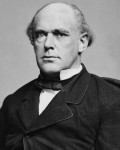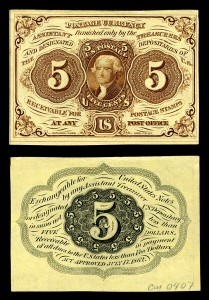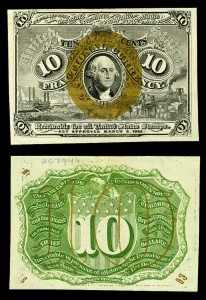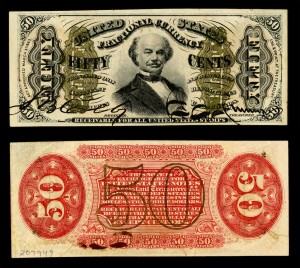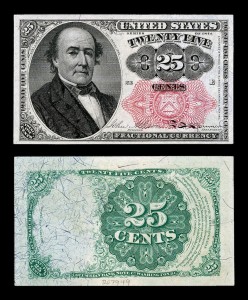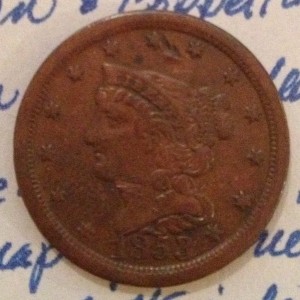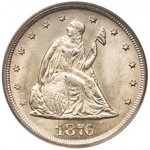Weekly World Numismatic News for February 21, 2021
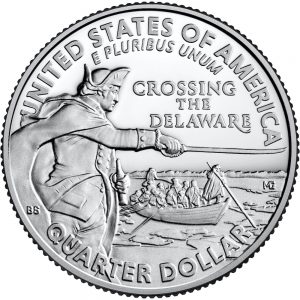 Change is dominating numismatic-related news.
Change is dominating numismatic-related news.
The news about the revival of the effort to replace Andrew Jackson on the $20 note with Harriet Tubman has received a lot of press. Change is always difficult, but when that change involves removing one political figure from currency and replacing it with another, the debates can be fascinating and frustrating.
Ellen Feingold, the curator of the National Numismatic Collection at the Smithsonian, wrote an article for Politico explaining the history of currency changes. As part of her discussion, Feingold suggests that the $20 bill should only be the beginning and that history is behind this type of change.
Within the numismatic media, writers are noting how collectors are weary of the changing quarter designs. If you read the online forums and blog comments, there might be a dominant view that there have been too many changing designs. More than a few posted that a commemorative coin may be a better option than the Prominent Women on Quarters program.
Taking the cues from numismatic forums and blog posts may not be the right venues to gauge public opinion. It is like asking the season ticket holder why baseball attendance was on a downward projection (pre-pandemic). In other words, you are preaching to the choir.
Why not they ask the kids, the future of the hobby? Young people grew up with constantly changing designs. Think about it, an 8-year old that started collecting state quarters in 1999 will be 30 this year. Change is all they know.
Charles Morgan might be right. It may be time to change all of our change. Maybe it is time for a modern renaissance.
And now the news…
 → Read more at businessinsider.co.za
→ Read more at businessinsider.co.za
 → Read more at politico.com
→ Read more at politico.com
 → Read more at npr.org
→ Read more at npr.org
 → Read more at thevintagenews.com
→ Read more at thevintagenews.com
 → Read more at seattletimes.com
→ Read more at seattletimes.com
Why are greenbacks green?
Did you ever want to know how or why something was done but there was no answer? Or there may have been answers but nothing definitive that would make any of the answers true? It is this type of curiosity that had me searching for the answer to one question:
There are references that claim that the green printed back was to differentiate the currency of the United States from those from other countries. Other references call it an anti-counterfeiting mechanism. Neither claim can tie themselves to the actual events in such a way that we can say which is the truth. Or can we?
For the history of the greenback, we have to start with Col. Dick Taylor. Born Edmund Richard Taylor on October 18, 1804 in Lunenburg County, Virginia. His father was Giles Taylor, brother of Col. Richard Taylor. The decorated Col. Taylor was the father of Gen. Zachary Taylor who would become the 12th President of the United States.Shortly after Taylor’s birth, the entire Taylor family moved to Kentucky because of exhausted lands in southern Virginia. They settled along the Ohio River outside of Louisville. In 1814, Giles moved his family Shawneetown, Illinois as one of the area’s pioneer settlers. Unfortunately, Giles died shortly thereafter leaving the family of little means.
Preferring to be called by his middle name, Taylor would be referred to by the common nickname of Dick and began travelling throughout the Midwest region to earn a living. At this time he would sign his name as “E.D. Taylor.” Dick Taylor demonstrated a lot of skill in organizing while operating as a trader on the frontier. By 1929, Taylor settled in Springfield, Illinois and married Margaret Taylor, the daughter of Col. Richard Taylor and sister of then Col. Zachary Taylor.
When the Black Hawk War broke out in 1831, he enlisted in the Illinois infantry and appointed as a colonel by the governor where he served with Jefferson Davis, General George Jones, and General Henry Dodge. Following the war he was elected to the Illinois House of Representatives then, after one term, was elected to the senate defeating a long-standing senator.
Taylor ran his senate campaign on a platform to move the capital from Vandalia to Springfield. To accomplish this, Taylor wrote a bill and worked with a representative named Abraham Lincoln, whom he met as a shopkeeper in New Salem. The bill was successful and Springfield has been the capital of Illinois since.
Taylor was a master at managing money and served the state in many capacities. In 1835, Taylor was appointed Receiver of Public Moneys in Chicago. Today, that position would be known at the comptroller. Under Taylor’s guidance, Chicago managed land sales better than any other city in the country and grew Chicago into the second largest city in the United States passing Philadelphia for that distinction. He was so well regarded in Washington, that not only did President Andrew Jackson hold a special dinner in Taylor’s honor, but appointed him to the commissions that oversaw the building of railroads in the upper Midwest.
With his connections from Springfield and working with Jackson, who is considered the father of the modern Democratic Party, Taylor became a member of the party and helped build the political machine that continues to run Chicago today. He was a friend and staunch supporter of Stephen A. Douglass and would travel the state stumping for Democratic candidates.
Taylor did not forget his friendship with Lincoln. Even though Lincoln had joined the then nascent Republican Party, he would also campaign with his friend in areas that were not strong Democratic strongholds. But for the presidential election of 1860, Taylor supported Douglas and campaigned throughout Illinois against Lincoln.
Lincoln was not a man to hold grudges and continued to seek advice from his friend especially on financial matters. In 1862 there was an impending financial crisis because of the Civil War and the hoarding of hard currency. Banks were failing because of liquidity problems and Secretary of the Treasury Salmon P. Chase was working with New York bankers to try to finance the government. Chase worked with Jay Cooke & Company to issue bonds but needed a way to make it liquid to stimulate the economy.Knowing how Taylor turned around the finances of Chicago and then the railroad alliance, Lincoln turned to his old friend for advice. Taylor convinced Lincoln to ask congress to issue currency backed by the bonds but with no interest. Using what he learned in managing tickets sales for the railroads, Taylor provided Lincoln the outline for a currency system that was adopted with much reluctance by Chase.
First published in Abraham Lincoln, author Emil Ludwig found a letter acknowledging Taylor as the person who came up with the idea:
My dear Colonel Dick:I have long determined to make public the origin of the greenback and tell the world that it was Dick Taylor’s creation. You had always been friendly to me. and when troublous times fell on us, and my shoulders, though broad and willing, were weak, and myself surrounded by such circumstances and such people that I knew not whom to trust, then I said in my extremity, ‘I will send for Colonel Taylor — he will know what to do.’ I think it was in January 1862, on or about the 16th, that I did so. Said you: ‘Why, issue treasury notes bearing no interest, printed on the best banking paper. Issue enough to pay off the army expenses and declare it legal tender.’ Chase thought it a hazardous thing, but we finally accomplished it, and gave the people of this Republic the greatest blessing they ever had — their own paper to pay their debts. It is due to you, the father of the present greenback, that the people should know it and I take great pleasure in making it known. How many times have I laughed at you telling me, plainly, that I was too lazy to be anything but a lawyer.
Yours Truly.A. Lincoln
Lincoln, not one to miss an opportunity, used his executive authority to begin the production of a national paper currency in the form of Demand Notes as an extension of the Act of July 17, 1861 (12 Stat. 259) that authorized the printing of fractional currency.
Since the federal government did not have printing facilities, the law was written to allow notes to be produced by a “New York bank note company.” The first four issues fractional currency were printed by the American Banknote Company and the National Banknote Company. By the fifth issue, the new Bureau of Engraving and Printing began to print these notes.
To save time and money, the first series of notes were printed four and six to a sheet in New York then shipped to Washington where the Treasury set up the Office of the Currency Comptroller to manage. As par of the OCC, the National Currency Bureau was created to do the cutting, bundling, and distribution of the currency.
The process for the United States to print its own currency had begun. While Secretary Chase was leading the plan to build a printing operation, congress authorized Treasury to establish an engraving and security printing bureau. That law was approved on July 11, 1862 (12 Stat. 532). With construction for a printing facility underway, Treasury hired James Duthie as the first engraver. Although he was a temporary engraver, he was provided a $1,600 per year salary (the equivalent to just under $38,000 in current dollars).
References:
- Conrad, Howard Louis. “The Originator Of Greenback Currency: Colonel Edmund Dick Taylor.” The National Magazine, June 1892, 209-14.
- Ludwig, Emil, Eden and Cedar Paul (translators). Abraham Lincoln. Boston: Little, Brown, 1930.
- Mitchell, Wesley C. A History of the Greenbacks, with Special Reference to the Economic Consequences of Their Issue: 1862-65. Chicago: University of Chicago Press, 1903.
- History of the Bureau of Engraving and Printing, 1862-1962. Washington: Treasury Dept.; 1964.
- Gurney, G., & Gurney, C. (1978). The United States Treasury: A pictorial history. New York: Crown.
- Friedman, Morgan. “The Inflation Calculator.” Accessed April 7, 2015. http://www.westegg.com/inflation/.
- Image of Col. E.D. Taylor from The National Magazine, June 1892.
- Image of Salmon P. Chase from the Library of Congress via Wikimedia Commons
- All fractional currency images courtesy of Wikimedia Commons
A coin expert’s survey
One of the problems I had with writing about this is that I did not know what to say. While it was fun to participate, what can I add to the survey? Rather than just reporting, I decided I would share my answers with some commentary.
- Kennedy Half dollar
- Susan B Anthony silver dollar coin
- Sacagawea dollar coin
- Two dollar bill
- None
Summary of March 2015 coin-related legislation
 March saw the sales tax come under attack as states are looking to the federal government to lift the restrictions on collecting taxes on interstate sales. The senate re-introduced the Marketplace Fairness Act with lifts the restrictions on all interstate sales, not just those made via the Internet.
March saw the sales tax come under attack as states are looking to the federal government to lift the restrictions on collecting taxes on interstate sales. The senate re-introduced the Marketplace Fairness Act with lifts the restrictions on all interstate sales, not just those made via the Internet.
In March, the Supreme Court ruled that a challenge to Colorado’s so-called “Amazon tax” can proceed in federal court, Justice Anthony Kennedy suggested that that the court should re-examine the physical presence rules. As part of the court’s opinion on the Colorado case, Kennedy wrote that the ruling “now harms states to a degree far greater than could have been anticipated earlier.”
Remember, the overwhelming majority of coin dealers are small businesses. All of these attempts by the states to squeeze every last cent out of you will put a heavy burden on small businesses. If it costs too much for small businesses to manage these sales tax rules it could impact coin shows all over the country.
This one is going to get dicy. stay tuned!
In February, there was only one bill that saw any action:
S. 301: Boys Town Centennial Commemorative Coin Act
The following two bills were introduced right before congress adjourned for their spring break and have not been published. While the Coast Guard commemorative is pretty self explanatory, H.R. 1698 is intriguing.
H.R. 1683: To require the Secretary of the Treasury to mint coins in commemoration of the United States Coast Guard
H.R. 1698: To amend design and content requirements for certain gold and silver coins
Always trust but verify sources… or check the date!
Did you get it? Did you figure it out? If you read yesterday’s post you would have discovered:
- H.R. 1776 has not been introduced in the 114th congress and there is no such bill as the U.S. Mint Restoration Act. But it sounded good!
- Even if the House of Representatives passed such a bill, it would still have to be voted on by the Senate and signed by the president.
- As for some of the actors in this play, House Financial Committee Chairman is Jeb Hensarling, not “Jim Hensling.” I don’t think they are related.
- anking member of the House Financial Committee is Maxine Waters, not Max Waterston. Max is not related to Sam
- Janet Yellen is a home girl (Brooklyn born, like your blog host) and Chair of the Federal Reserve Board of Governors. I’m sure Jan Yelling is a nice person, but she’s not running the Fed.
- In an attempt not to use “Rhett Butler,” Rhett Jepson is the U.S. Mint’s Principal Deputy Director. I don’t know who Jett Butler is—but he sounds like he should be a kicker or something.
- Rosie Rios is a very nice person and is the Treasurer of the United States. Rosalind Rio could be her evil twin, but that is not confirmed.
- Finally, Jake Lou sounds like a good-ol’ boy, but he is not the Secretary of the Treasury. Jacob “Jack” Lew is the man in that job probably way too busy for this stuff.
In short:
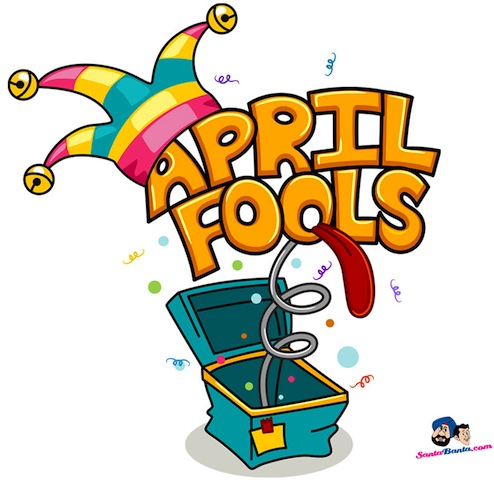
Like the Orson Well’s broadcast of The War of the Worlds, all you had to do is change the channel (or check another source).
That was fun!
Now back to our regular numismatic content.
Congress reauthorized old denominations
Starting in 2016, the U.S. Mint will be required to produce the half-cent, two-cents, three-cents, and 20-cents coins using the designs that appeared last on those coins. To save money, the half-cent will be made of copper-coated aluminum while the two-cent coins will be similar in composition with the current Lincoln cent. Three-cent coins will be made of copper-nickel with ratio of 75-percent nickel to 20-percent copper and 5-percent zinc. The 20-cents coins will be a clad coin with no reeds on the edge.
- 1865 Two Cents
- 1866 Three-cent nickel
- 1876-CC Twenty cents
Claiming that they are being faithful to the constitution, Financial Committee Chairman Jim Hensling said that to bring back these coins would not only increase the options for the American public but that the seigniorage earned from making these coins would go a long way to help balance the budget. Speaking with Hensling, Ranking Member Max Waterston was optimistic that this would provide needed relief for low-income people looking to save their change.
The measure was supported by supported by Jan Yelling who also expressed concern that the coin rooms were overflowing with unused dollar coins. However, with expansion at many of the Federal Reserve member bank’s coin rooms that there should not be a problem supplying the country with the new coins.
Looking a little forlorn at the announcement was the U.S. Mint’s Principal Deputy Director Jett Butler. On the job since January, Butler has to figure out how to ramp up production of these new coins in time to have them in circulation by 2016. However, we were assured by Treasurer Rosalind Rio that the U.S. Mint will have the resources to allow them to bring up the production levels to meet the demand.
Bringing back these old denominations will certainly introduce new collectibles to the numismatic community. It will also be an opportunity for the makers of folders and albums to add to their portfolio. It is possible that the result will introduce new people who will collect these coins and learn about the past and why these coins were originally part of the U.S. currency system.
Finally, in a statement read on behalf of Jake Lou, who could not attend, he applauded the work of congress and asked that they consider allowing the U.S. Mint to replace the paper one-, two-, and five-dollar notes with coins. Lou noted that the seigniorage on a five-dollar coin could be as much as $4.50, which could go a long way to help balance the budget. Hensling and Waterston were non-committal on the proposal.
All other images courtesy of Wiki Media Commons.


